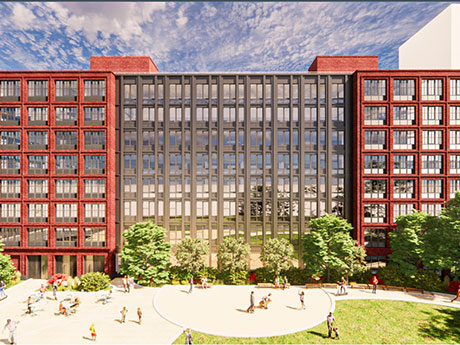NEW YORK CITY — The New York state legislature has approved a new tax break program as part of the recently passed 2024-2025 budget to address the dearth of housing supply in and around Manhattan. Lawmakers say the program could increase affordable housing development throughout New York City, but some New York City residents are skeptical the program will do much to address the issue.
485-x was introduced as part of the New York state legislature’s budget for fiscal year 2025, which runs from April 1, 2024, to March 31, 2025. The program offers developers a 10- to 40-year exemption from property taxes. To be eligible for the tax break, developers will have to set aside a certain number of the property’s units as affordable housing, depending on the size and location of the project.
For developments with more than 150 units located in Queens, Brooklyn and certain areas of Manhattan, builders are required to set aside at least 25 percent of units at 60 percent of the area median income (AMI). For smaller projects located outside of these areas, 20 percent of apartments must be rented at or below 80 percent of AMI.
The program also sets wage requirements for construction workers on qualifying projects. All developments with more than 100 units will have a minimum wage requirement of $35 an hour. Higher wages may also be required in Queens, Brooklyn and regions of Manhattan.
The full text of 485-x can be found on the New York State Senate website.
The 485-x program was designed to be a successor to 421-a, which expired in June 2022. The 421-a program granted New York City owners abatements on property taxes if they restricted rents on at least 30 percent of units at the property.
Some New York City constituents objected to certain components of the 421-a program, arguing that the tax exemption was not effective and drained too much city tax revenue. However, according to estimates from the New York Governor’s office, the 421-a program produced more than two-thirds of all newly constructed multifamily housing in New York City over the past decade.
Applications for building permits in New York City have slowed substantially since 421-a expired. According to the Real Estate Board of New York, developers applied for permits to construct just 9,626 apartments from January to November 2023 — down from 45,162 proposed units during the same period in 2022.
Notably, the newly approved budget for 2024-2025 extended the completion deadline for unfinished projects that received tax abatements through the 421-a program. Developers now have until 2031 to complete these projects.
“Tax-abatement programs are always a good way to entice developers to move forward with their projects,” said Eric Brody, managing partner at ANAX Real Estate Partners, in a statement to Multifamily & Affordable Housing Business.ANAX Real Estate Partners is a New York City-based firm specializing in real estate finance advisory and development.
“But what I think this new [485-x] program does in this moment is provide some much-needed clarity to developers and lenders when underwriting deals,” Brody added. “It gives us a sense of certainty in our underwriting, which we didn’t have before.”
Housing availability in New York City is reaching the point of crisis. According to Mayor Eric Adams, the city would need 500,000 new homes and apartments built over the next decade to meet demand.
“Housing is becoming more and more expensive due to the lack of supply,” explained Brody. “Increasing supply is extremely relevant, and it’s something that legislators in New York are finally paying attention to. We’re experimenting because it’s a free market, but we don’t know if developers and builders are incentivized enough to get us to where we need to be. It’s important that we implement programs to get things moving.”
To that aim, the City of New York has also introduced a zoning reform proposal dubbed City of Yes for Housing Opportunity in September 2023. The proposal details several strategies to boost the construction of housing across New York City, according to the Department of City Planning.
For instance, the proposal would relegalize the development of housing above businesses on commercial streets in low-density areas, as well as remove parking mandates, which currently require off-street parking. The proposal would also update regulations to allow the conversion of underused or vacant office spaces into housing.
Further plans for City of Yes for Housing Opportunity can be found on the project’s website.
The City of Yes for Housing Opportunity proposal entered public review on April 29, 2024, after which it will go to the City Planning Commission for a vote this summer. If passed, the City Council is expected to vote on the proposal by the end of the year.
“New York City is at a critical fork in the road,” said Adolfo Carrión, commissioner of the New York City Department of Housing Preservation and Development, in a prepared statement. “We can either continue struggling with record homelessness and housing scarcity, or we can fix our broken zoning and say ‘yes’ to housing opportunity. It’s time for bold action to ensure housing equity across all neighborhoods.”
— Channing Hamilton


